Week 13 ~ wildcard week
Laser-induced Graphene (LIG) origami
I really enjoyed this week, learning about a really cool process on one of the most 'basic' fablab machines. Many thanks
to Wedyan Babatain for the great intro to the process and support during the week.
I was intrigued by the ability of adding electrical properties to a material as part of a classic fabrication/cutting procedure.
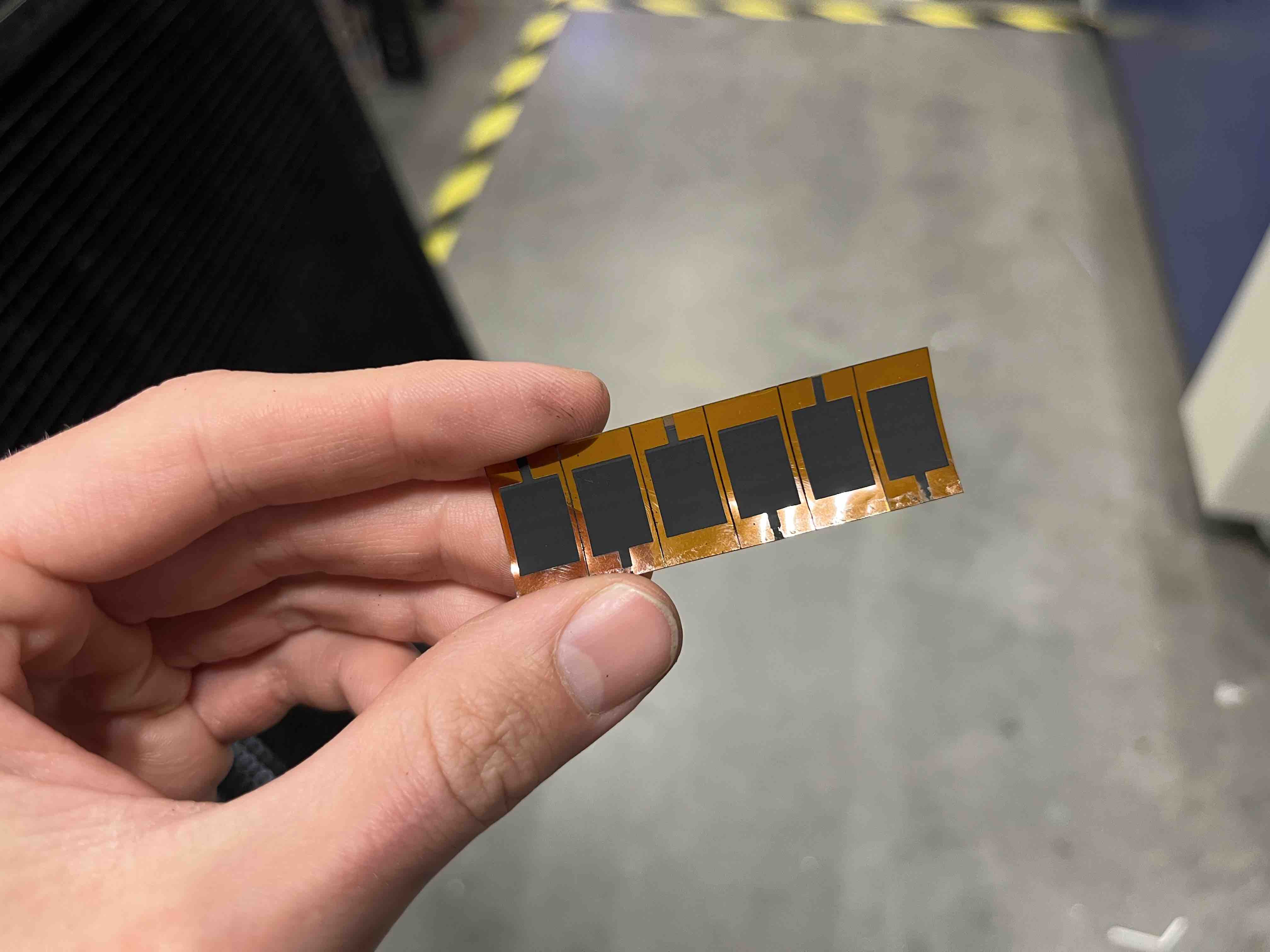 The zig-zag LIG capacitive sensor before folding. The scoring of the folds worked surprisingly well - I reduced the power ~50%, so it didn't cut all the way through (still generated a thin LIG-like line though!)
The zig-zag LIG capacitive sensor before folding. The scoring of the folds worked surprisingly well - I reduced the power ~50%, so it didn't cut all the way through (still generated a thin LIG-like line though!)
 Zig-zag sensor after folding.
Zig-zag sensor after folding.
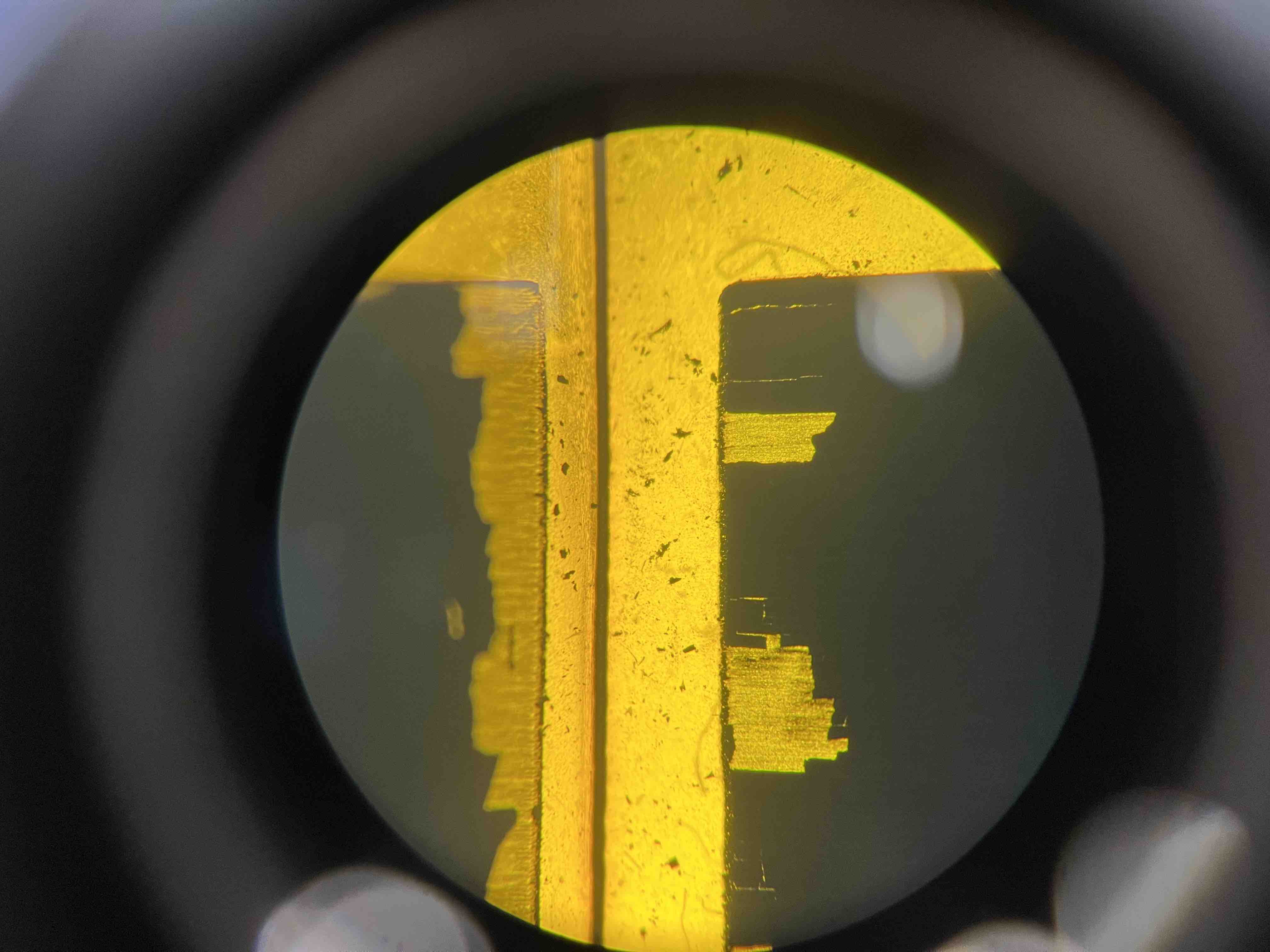 LIG flakes of the first test under the analog microscope ...
LIG flakes of the first test under the analog microscope ...
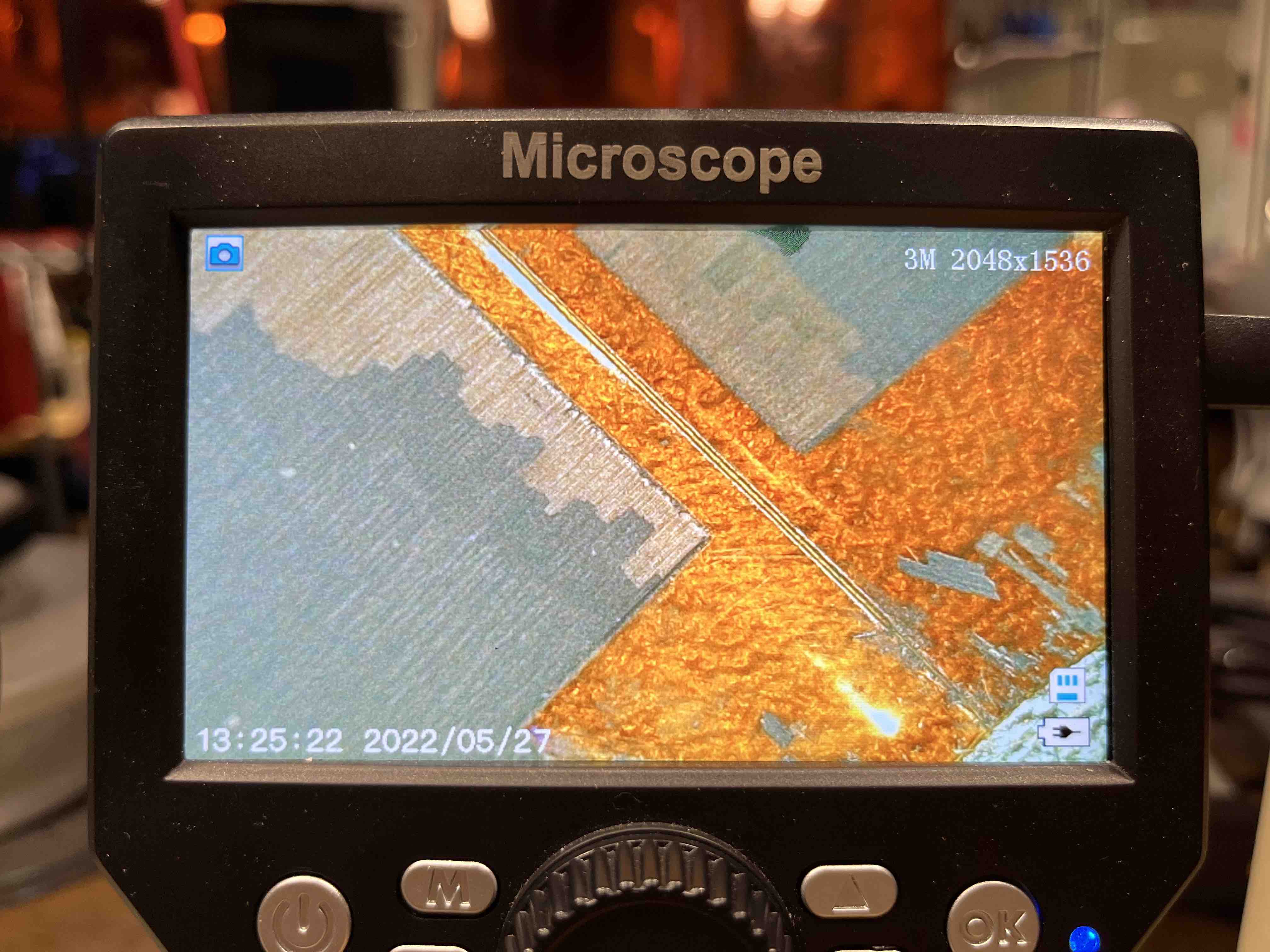 LIG flakes of the first test under the digital CBA microscope
LIG flakes of the first test under the digital CBA microscope
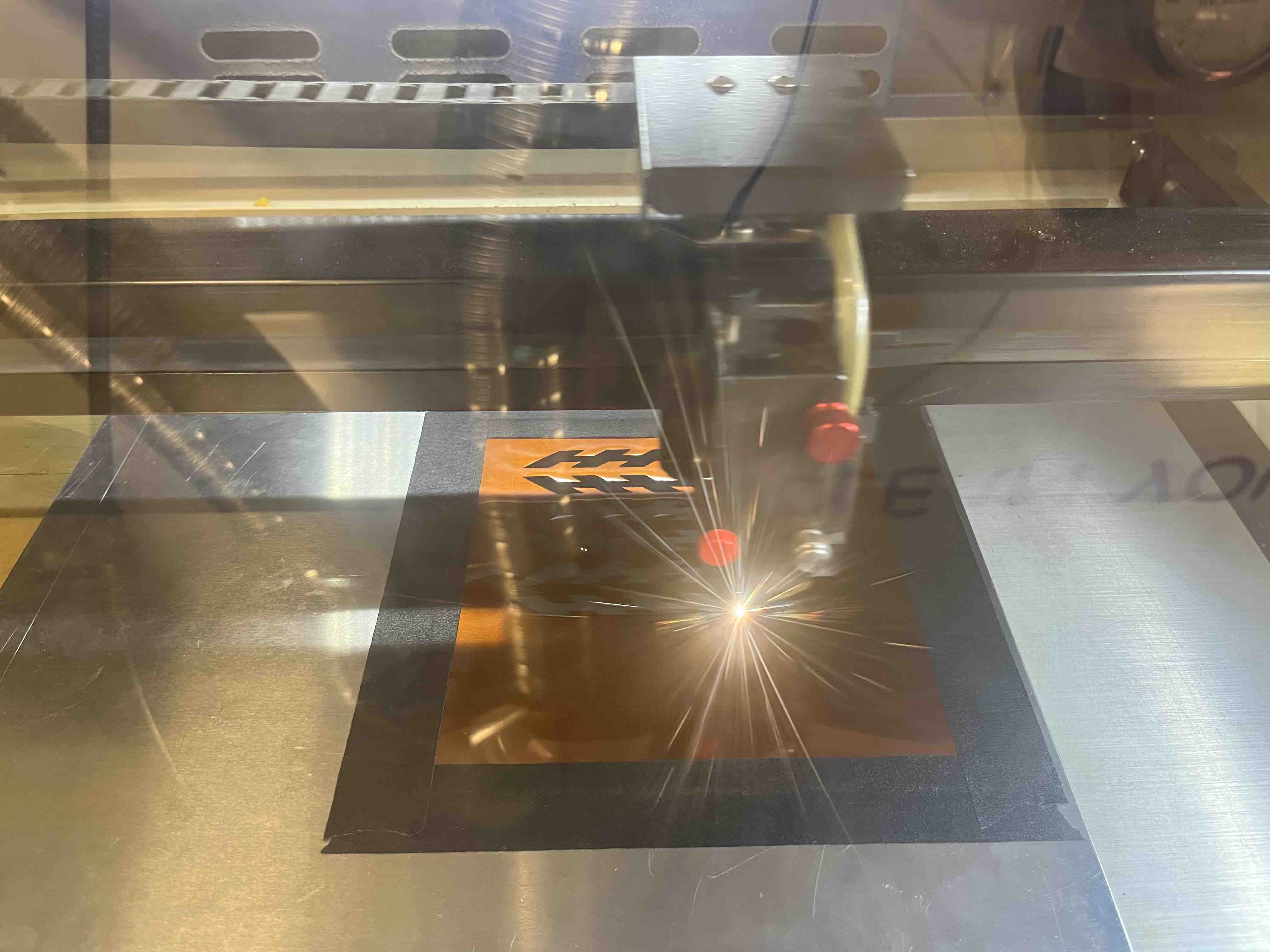 Engraving LIG pads on the faces of a Miura-Ori origami crease pattern.
Engraving LIG pads on the faces of a Miura-Ori origami crease pattern.
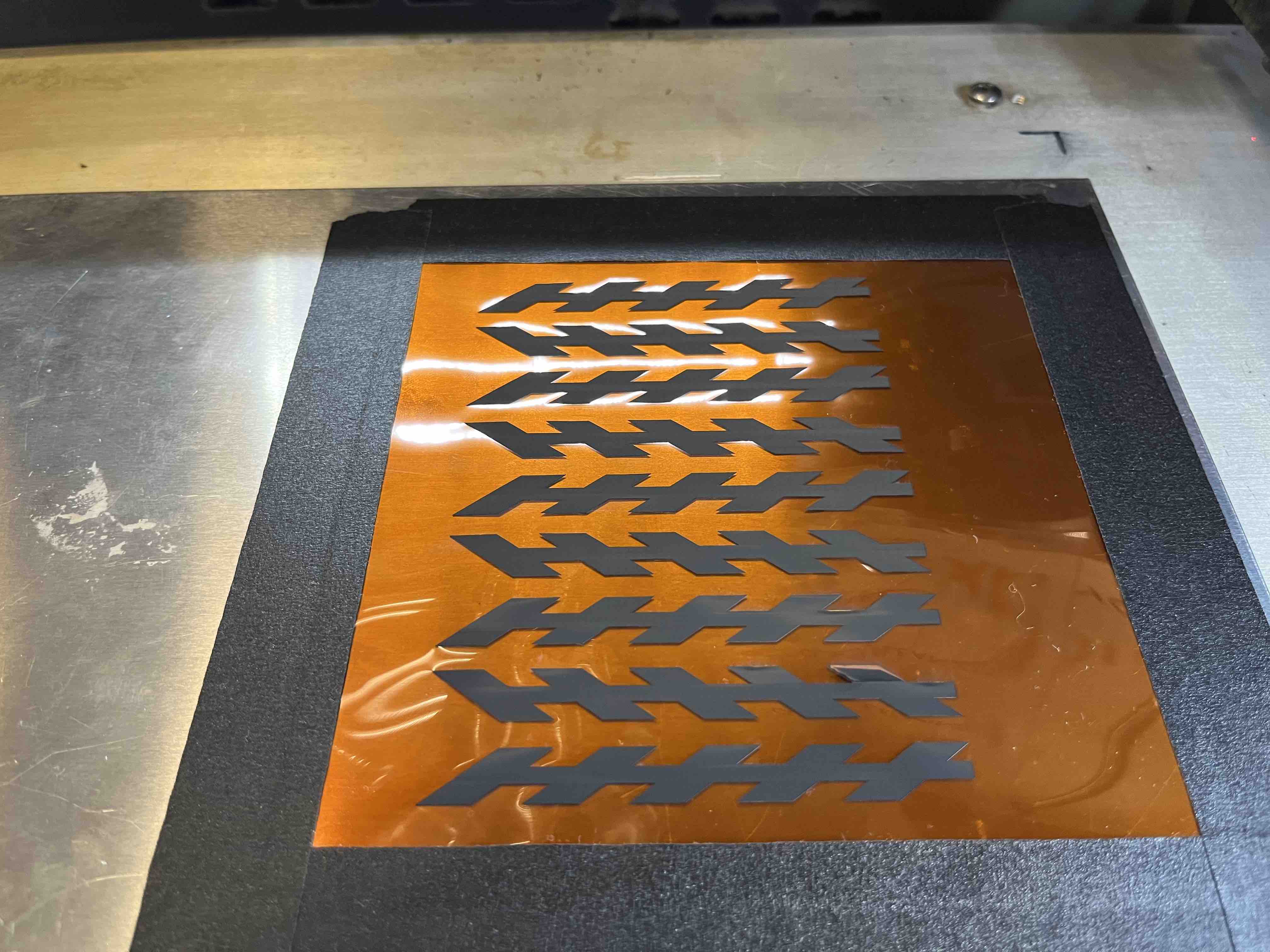 LIG pads after engraving, some slight flaking in the right corner, perhaps due to uneven base plate/uneven adhesion.
LIG pads after engraving, some slight flaking in the right corner, perhaps due to uneven base plate/uneven adhesion.
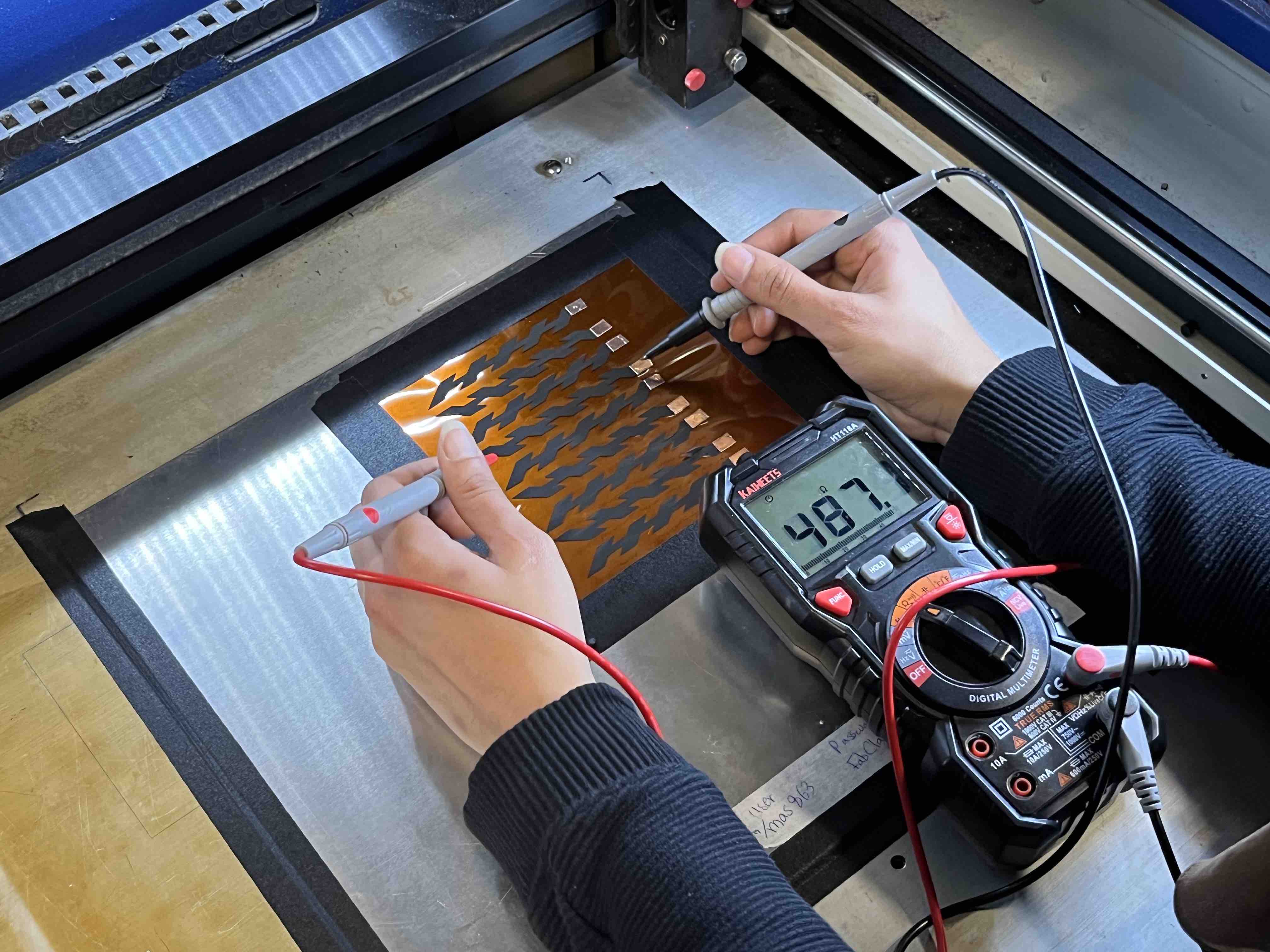 Applying conductive-adhesive copper tape to allow soldering and measuring the resistance of the pads - very consistent, all aound ~480-500 ohms.
Applying conductive-adhesive copper tape to allow soldering and measuring the resistance of the pads - very consistent, all aound ~480-500 ohms.
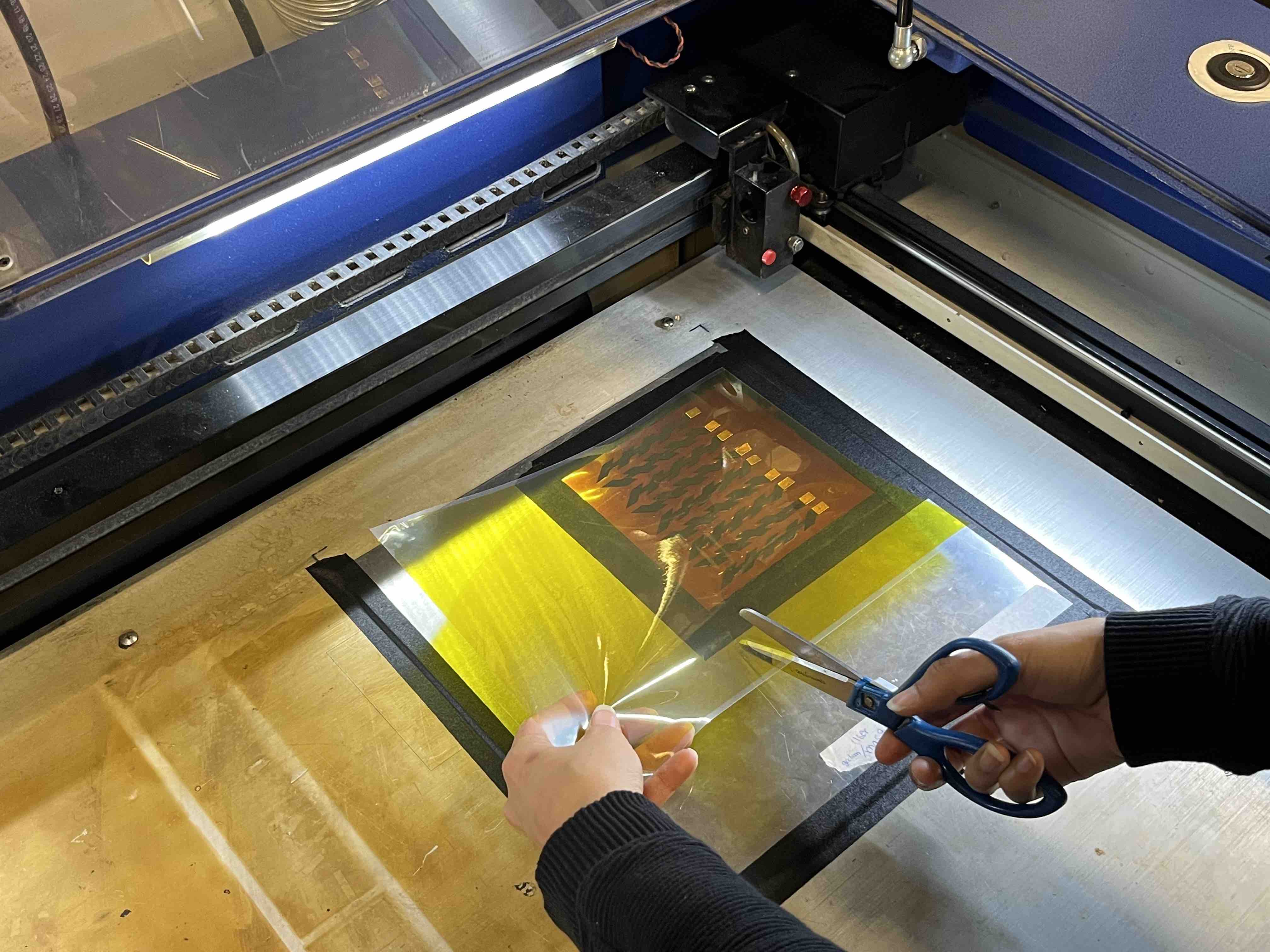 Applying a second layer of polyimide film (thinner and mildly adhesive) to protect the LIG layer.
Applying a second layer of polyimide film (thinner and mildly adhesive) to protect the LIG layer.
 Folded Kapton/LIG origami and earlier test pieces. The folding did not work very well -
talking to Ozgun briefly, she mentioned perhaps trying PEI/Ultem sheet as an alternative that might be more compliant/foldable.
Another alternative might be to make a hybrid material, where the hinged parts are replaced by another material/fabric (or
perhaps the second layer is only applied selectively to the faces), but part of the appeal of LIG for me had been the ability
to have a single fabrication step that combined mechanical and electrical function.
In any case, I would love to explore this space further.
Folded Kapton/LIG origami and earlier test pieces. The folding did not work very well -
talking to Ozgun briefly, she mentioned perhaps trying PEI/Ultem sheet as an alternative that might be more compliant/foldable.
Another alternative might be to make a hybrid material, where the hinged parts are replaced by another material/fabric (or
perhaps the second layer is only applied selectively to the faces), but part of the appeal of LIG for me had been the ability
to have a single fabrication step that combined mechanical and electrical function.
In any case, I would love to explore this space further.
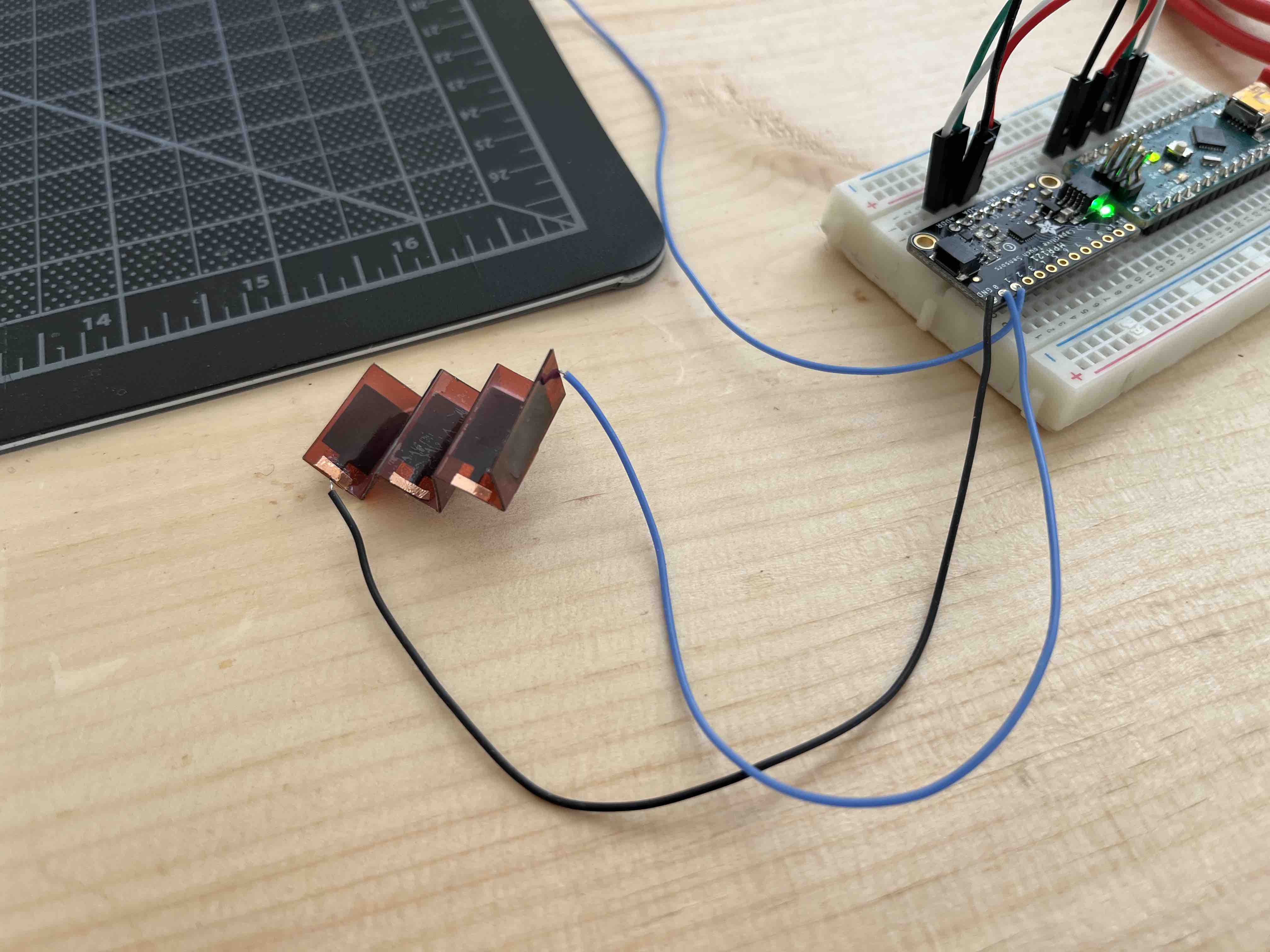 Testing the second zig-zag sensor (also with copper tape and second adhesive Kapton layer applied, as for the origami test): I couldn't get significant readings through the set-up I had from inputs week,
but may just require playing with the resistor values/trying Neil's AC-based 'step-response' method instead
Testing the second zig-zag sensor (also with copper tape and second adhesive Kapton layer applied, as for the origami test): I couldn't get significant readings through the set-up I had from inputs week,
but may just require playing with the resistor values/trying Neil's AC-based 'step-response' method instead